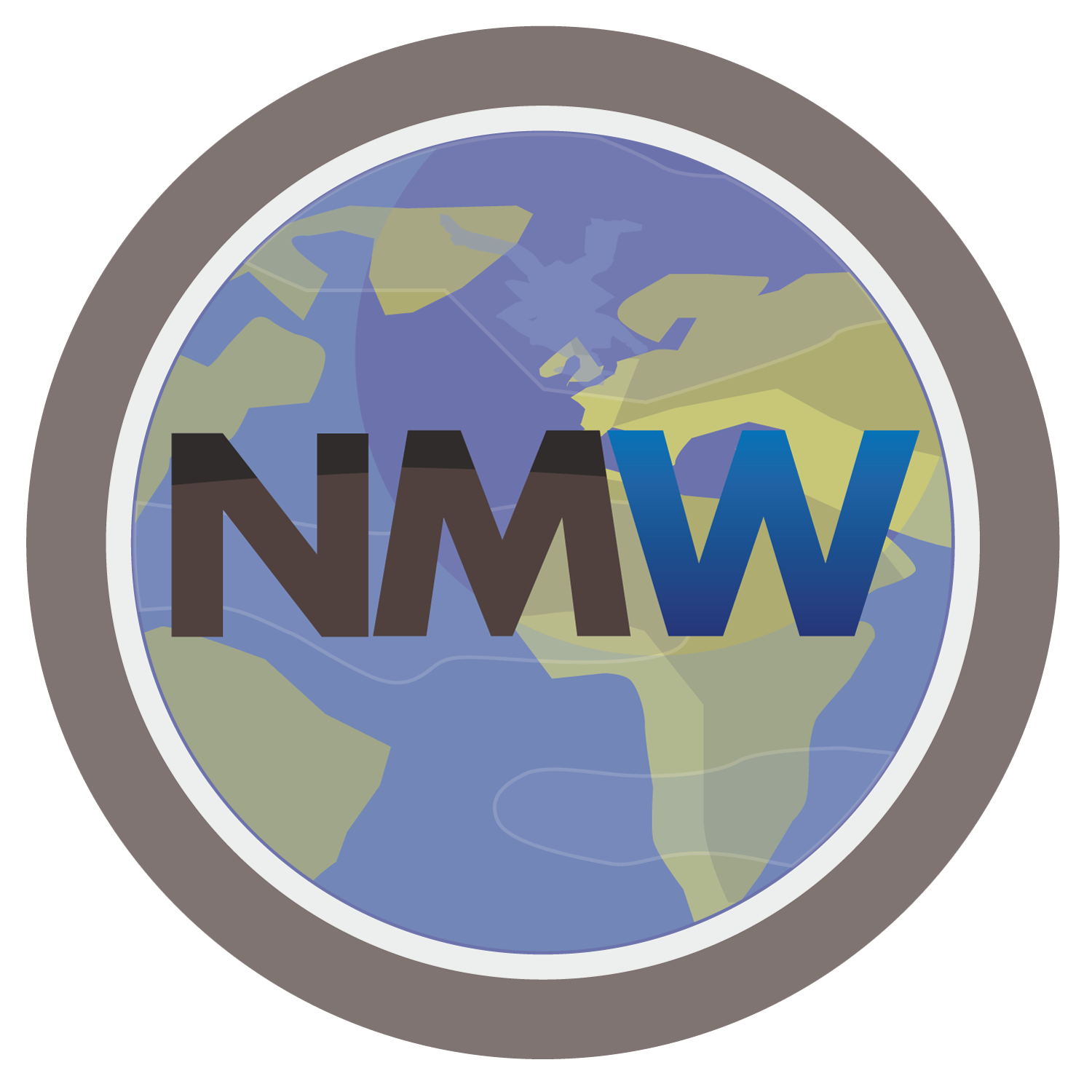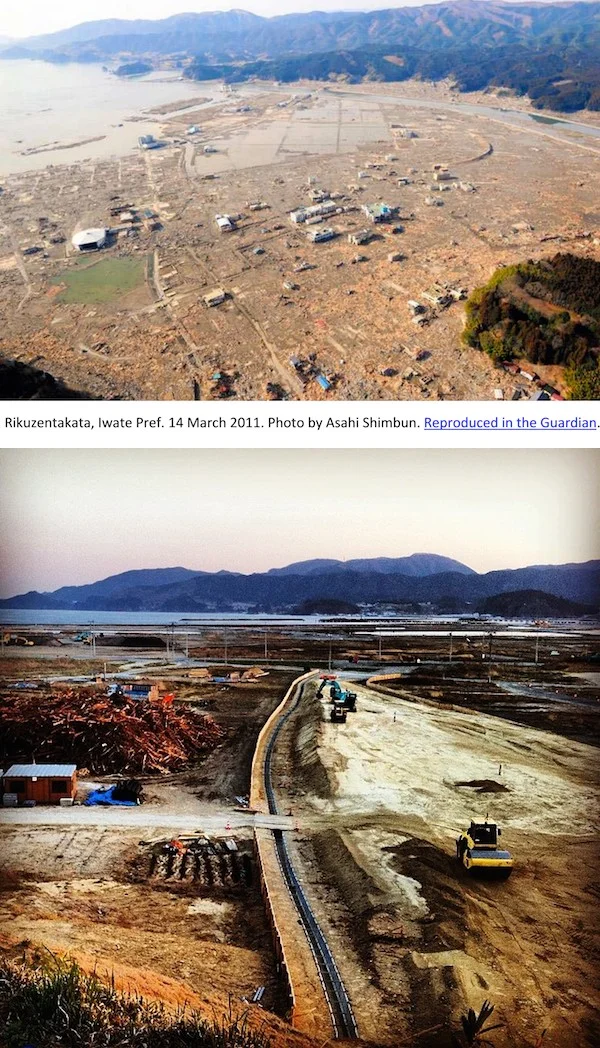One month ago, I was staring out of an oval window, watching the choppy water get shockingly close, and grabbing my armrest with one hand while the other hovered over the vomit bag in anticipation. Our descent into Sendai was paired with my co-worker's story of the time when a captain on his flight announced they were going to make an emergency landing in water. That didn't help. I knew we would be okay; today was just a windy day. I still had white knuckles upon our arrival though, and I think it was less about bumpy landings than it was about anticipating powerful information and stories...and wondering if I was going to be helpful.
Diving deeper into Japan's recent past
On March 11, 2014 at 2:46pm, I sat at my hotel room window looking out at the city of Hiroshima. I closed my laptop and watched three boys goof around by the river. For two minutes, I tried to feel the weight of an event I didn't experience firsthand and empathize with the many who did. When I returned to my computer, I published a post announcing a trip to the north with a couple hard-working students and some passionate lifelong students.
Proposed and planned by our Global Studies teacher Nick Martino, we were going to visit one of the most devastated town in the region and make a mini-documentary about rebuilding and recovering. Students applied for positions on the team by writing about their interest in the topic and the skills they could offer.
The trip took place from April 10th - 15th and was made possible by the amazing guidance of fixer and friend Kaz Meiki, as well as the many people with which he connected us for interviews and opportunities to learn more. It was a meaningful experience that left an immediate impact, but the trip has lingered in the forefront of our minds ever since, along with a call to action that will not fade with the publication of the mini-documentary.
The Mayor's book and our trip
We discovered on our final day of shooting that the Mayor of Rikuzentakata, the city we visited, wrote an ebook on his personal and professional experience during and after the disaster, called Let's Talk About It: What Really Happened In The Disaster Area. This town lost Upon returning to Hiroshima, I unpacked my bag and purchased this ebook, only to begin seeing parallels between the book's contents and our experience in the Tohoku region.
With each excerpt I highlighted, I recalled our experience that allowed me to create a visceral connection to the events and the people, and while it might seem functional only to those of us who were there, I decided to take those excerpts and pair them with a recount of our trip's realizations. It was apparent during our interview with the Mayor that the citizens of Rikuzentakata are comforted to know that others around the world still think of their loss and their recovery. I want to share these thoughts and experiences with anyone who would like to share compassion with Northeast Japan.
Arriving in the disaster area
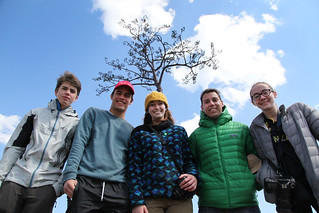
"..we initially did not have the infrastructure set up to accept volunteers. I would like for this issue to be noted for major disasters." Loc 473
Nick and I first met our fixer Kaz Meiki at the diner across from our hotel. We wriggled in our seats over Eggs Benedict in anticipation of the meaningful trip Meiki-san was pitching, brushing his finger lightly across an iPad readied with daily itinerary slides and accommodation options.
We can stay in an old school that accommodates visiting volunteers, or we could stay in one of the few hotels that has since been rebuilt. It depends on your budget and what your team wants to prioritize. Staying in the school is more affordable and communal, and staying in the hotel is more comfortable and beneficial to the local economy.
We decided to split our five days between the two options, starting with three nights in a converted school through the organization P@CT. During the disaster in 2011, this building had many functions in the recovery efforts, including a morgue. In those initial months, the city needed a lot of support but couldn't support those volunteers overnight. Eventually, the multi-functional school building settled in to becoming comfortable Japanese and Western-style accommodations for those who came to help.
On that first night, I remember lying in my bed, taking in the smells of new furniture, and feeling the small tremors that are a constant reality in Northeast Japan.
Getting hands-on the first day
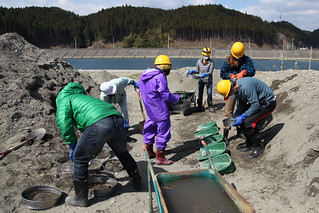
"The search for the deceased was related to the reasons there was a major delay in processing the rubble strewn all over town. Looking at this from a time efficiency standpoint, it would make sense to haul the debris using bulldozers, but there was the possibility there would be bodies buried under the rubble." Loc 572
On the first morning of our trip, we wrapped our necks in scarves and unpacked the work gloves we purchased heading into town. The volunteer coordinators at P@CT led us to a pile of rubble they were sifting through and instructed us on how to separate seashells from metals from burnable garbage. Initially, this exercise felt like real archeological work, but the intrigue wore off in the absence of the real explanation that was to come a little later: that we were sifting through rubble in search of human remains.
"Initial estimates told us the amount of rubble would be 926,000 tons, but it's actually 1,480,000 tons. Reasons for this include the fact the dirt in the agricultural lands contained bits of plastic, glass, and wood all mixed in together, fitting the Environmental Agency's operational definition for 'rubble' or 'disaster waste.' In order to process the rubble, we must first sift it and separate out dirt." Loc 1137
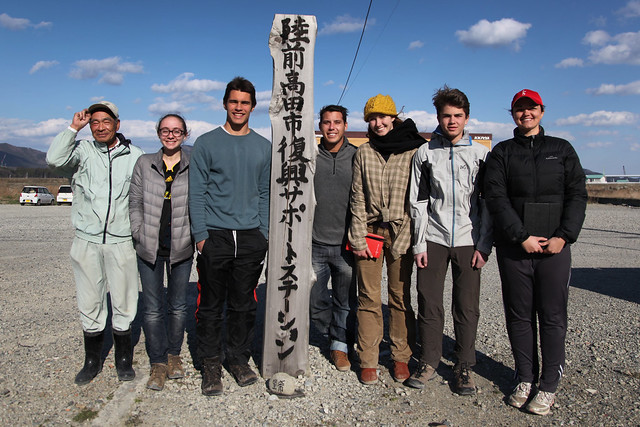
It appeared at first that we were merely sorting recyclables. After speaking with the coordinator Sato-san and our fixer Meiki-san during breaks, we each grew closer to an understanding of the significance of our efforts. Establishing once and for all that a bucket-full of dirt was without signs of human loss was a crucial step in a process to recover souls from purgatory and families from emotional limbo as well. There were so many families who lost loved ones and had no evidence of their bodies to cremate. Even one strand of hair could provide a mourning family with a sense of release, as well as the owner of that strand.
We grew to learn this was one of the Mayor's most highly regarded projects, and it was with dirty hands and windblown hair that we started our acquisition of visceral understanding.
Starting to gain a real understanding
"I feel the helplessness of being human as this went on: helpless people being washed away, propane tanks exploding, and the surreal experience of watching houses, possibly our own, pass in front of us." Loc 166

With every new interview and interaction, each of our four traveling student filmmakers grew a little closer to the disaster whose aftermath they could still see. We spoke with Sato-san about watching his home wash away. We stood at the base of the only remaining pine tree near the coast, one that once stood along with 70,000 others to guard the town from full tsunami force. We rode around the neighboring town of Ofunato with students whose lives were irreversibly changed, many of which lost their homes and/or loved ones. The Mayor's words of despair and helplessness began transferring into our own bones.
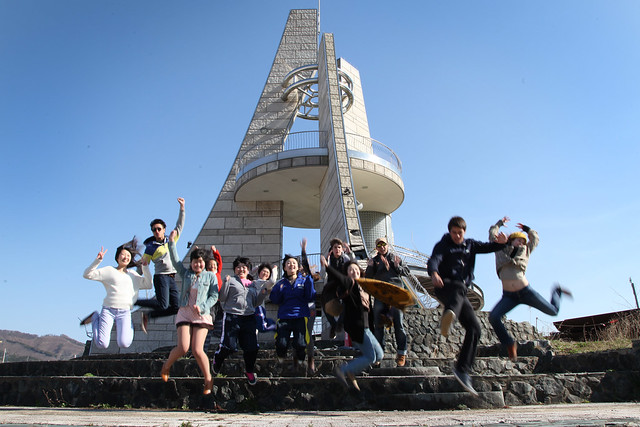
My students' connection to the disaster seemed to grow from personal emotions to a larger sense of compassion for the communities affected. Hanging out at a new coffee shop (set up in a shipping container) and swapping stories with kids their own age was a relaxed but illuminating activity – and, of course, caffeine/sugar-fueled. They got an opportunity to see these terrible events through the eyes of their counterparts and witness the stoicism often attributed to this country's citizens.
"The answer we received, however stated 'There's a lot of protocol, and even if the construction were to be approved, it will take two years until construction can begin.' That we had to go through such cumbersome steps in an emergency situation like this!" Loc 557
Google Maps still displays Rikuzentakata as a salt-encrusted field with a network of roads to nothing. What could have been cleared, leveled, and rebuilt upon was instead left to wait until federal protocols could take their leisurely course. It took 11 months to open the Reconstruction Agency for this disaster.
Japan is a country that excels in routine and structure, even in states of emergency that merit a shift in normal operations. The Mayor wrote his ebook with great frustration for the snail-like processes that were inhibiting recovery in his town, especially that which affected jobs and housing for those citizens who were still reeling.

Visiting a good friend of Meiki-san in temporary housing was an eye-opening opportunity for my fledgling filmmakers to both experience incredible Japanese hospitality and the reality of many citizens who continue their three-year struggle for privacy and comfort.
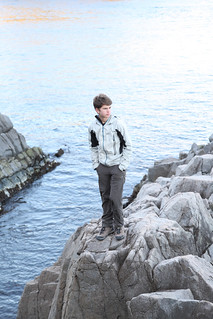
Possibly one of the more unexpected revelations from this visit was from learning the perspective of this fisherman on the ocean, that which wiped out his home, land, and suspended his work on the water. It wasn't of fear or anger. He saw the tsunami as the ocean's method of cleaning itself. There was no vilification of nature going on in his brain; instead, he grew to venerate and appreciate it even more.
Each ringing of a memorial bell, each personal story translated, and each drive past the 2km x 4km wasteland further imprinted the magnitude of nature's power on all of us. When the producer and director scheduled a drive to a look-out point along with some of the local students, we all met a powerful moment were visualization allowed us to imagine the waves engulfing a peninsula and washing out a town in 6 minutes (and repeating this gesture for hours to come).
Meeting with the Mayor (and author)
"From now on, it's important to not expect complete disaster prevention, but to work towards reducing the aftermath of such disasters." Loc 839
As my dad would call it, our final day included STLFT (something to look forward to): an interview with the Mayor of Rikuzentakata (and the author of these excerpts). After four days of directing camera angles and interview questions, the students were getting very skilled at filmmaking. I took a seat across from the Mayor and pointed my camera as per the director's request. Along with the Deputy Mayor and the city's Head of Global PR, Amya Miller, we received a rare honor of hearing the passionate, thoughtful perspectives of those in a position to affect big change in Rikuzentakata.
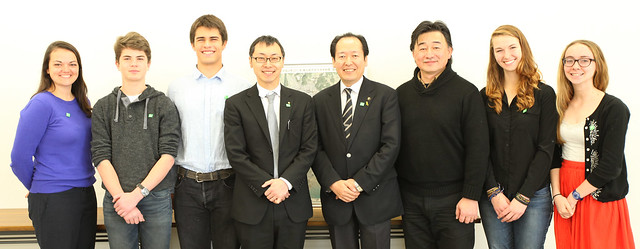
"There is truth if we are able to recover speedily, we would serve as a successful model for the rest of the world, especially considering we have been watched as a town that endured such intense devastation...it's better to challenge ourselves to experiment, even if we fail." Loc 974
We all came away moved and motivated by this opportunity, but the affirmation I heard and happily received was regarding our presence in the region. While I was originally anxious that my/our presence would be seen as unhelpful or unwelcome, the Mayor and Amya helped us not only to feel truly welcome but to be fueled with obligation and purpose to share our findings with the rest of the world. The nature of our trip, to find a story to tell, was embraced, as was our approach and style. I shouldn't have been so skeptical as one of the leaders of the trip, but I'm always worried about reception and perception in places that feel exploited.
You should feel welcomed to visit, too.
"We'd like you to come, to buy lunch, or even one bottle of juice. When you do this, when you buy something, it helps us in the disaster areas. Please do visit us, even if you're not volunteering. People might say you're sightseers, but that's not true. We have a message of YouTube, and the city website extending an invitation to all." Loc 1271
Moving forward in Tohoku
"What we fear most in moving forward with our recovery is that this latest disaster and the disaster area we live in will be forgotten...For those in the disaster area who lost everything, there's nothing more heart-warming than knowing you are still thinking of us." Loc 932
While I unpacked my bag and started searching Amazon for this ebook, my student filmmakers unpacked their memory cards in preparation for a rigorous post-production process. This was their first attempt in documentary work and working as a team to craft a story of great importance.
While they didn't take this task lightly, nor did we imply such leniency, it was clear that whatever they would produce would accomplish the goal of reminding more people about the 3/11 disaster that is not yet in the past. With greater and truer storytelling comes more views and a stronger impact on those viewers. It was empowering and fulfilling to know that our mission fit within the city's goals for recovery. We could potentially start to repay the value of hospitality we received over those five powerful days and do what we could to help.
I hope you join us in thinking about Rikuzentakata and the entire region that continues to slowly rebuild itself today. While there have been many steps forward, they still would appreciate your support in the recovery, and this can be as simple as following them on Facebook, really. P@CT is also one of the Mayor's preferred causes that welcomes volunteers, both short and long-term.
The more wonderful people and places I encounter, the more difficult choosing causes becomes for me, and I can understand that you might as well find difficulty in extending much of yourself to this cause with so many other things begging for your support. That's why I hope it feels entirely doable to you to simply follow them on Facebook and begin your engagement there. A message, a photo, or a "like" could be just the encouragement they needed for the next step.
"The reason we've been able to handle the long and difficult days we've faced is because we've had words of encouragement from people throughout Japan and abroad. Ah, we have not been forgotten. The sense "we're not alone" turns into our will to live, and this becomes energy that fuels our recovery (Loc 72)...To those who have read this book, until this day comes, please do not forget Rikuzentakata, or Tohoku." Loc 1341
